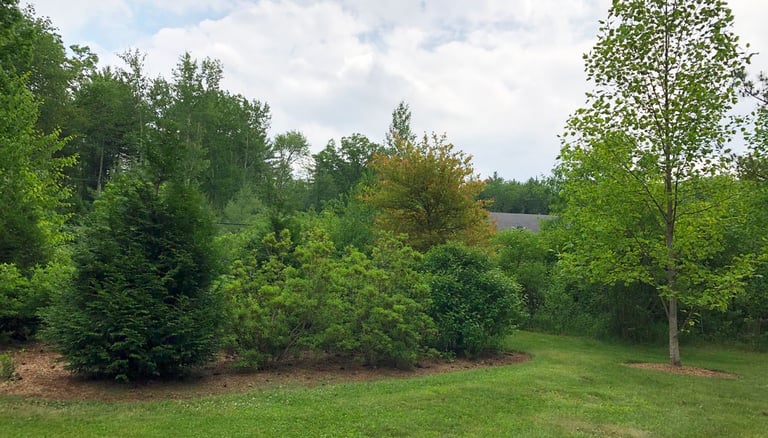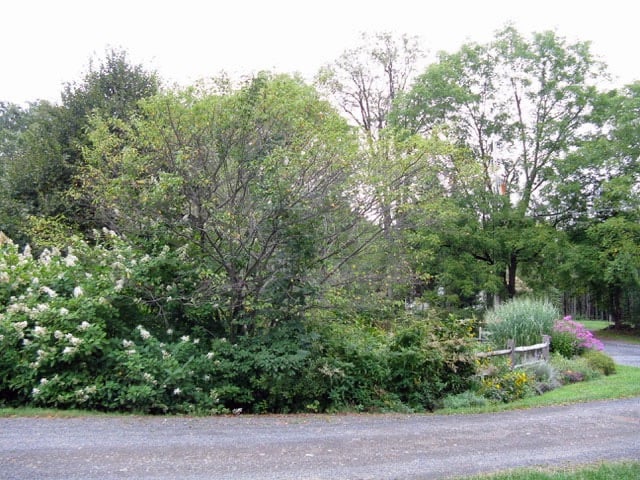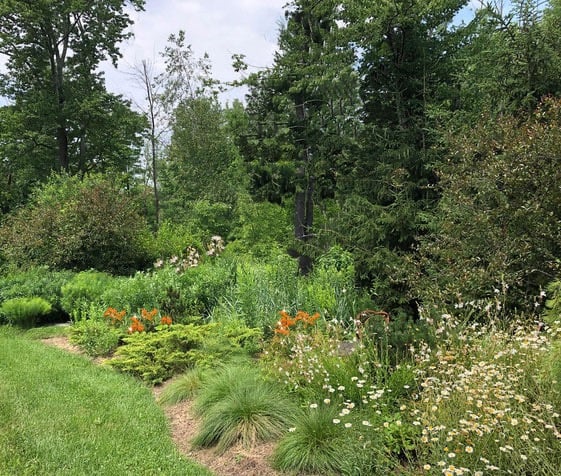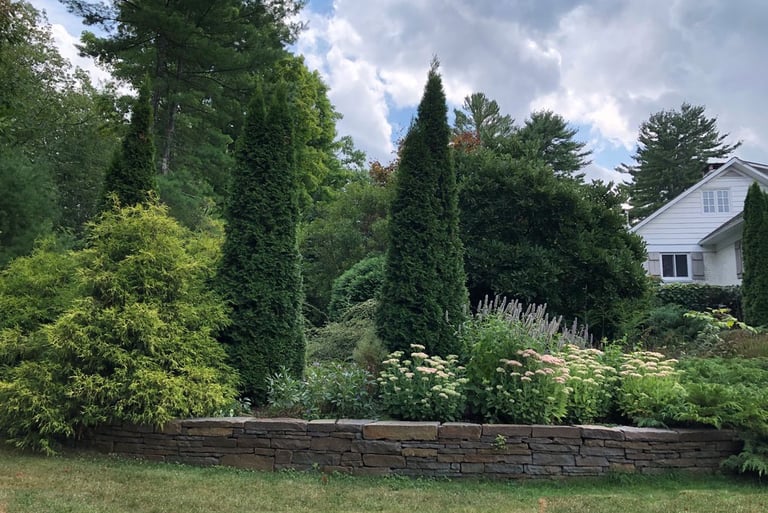Planting for Privacy & Wildlife
2/19/20255 min read


Privacy is a valuable commodity with today’s ever increasing population, noise and lights. While community and friendship among neighbors is important, the need for a sense of privacy is also understood. With a little creative thought most privacy problems can be solved with good landscaping. Quick solutions such as walls, fences and berms can be incorporated along with the lushness and beauty of plants, or you can use plants on their own to this purpose. One of the best ways to accomplish privacy is with a well designed and biodiverse hedgerow. The design can be linear or more of an island, the layout can undulate and overlap to become a natural part of the landscape without attracting attention to that which you wish to cover. Aesthetically, these groupings are the opposite of the common solution to privacy that consist of a formal row of evergreens that mark off boundaries with artificial effect and often attract the eye rather than deflect it.




Where to Begin:
The structure or “bones” of the hedgerow should be designed with a long term vision. You want to consider what your hedgerow will be like in ten even twenty years. Planning to edit is fine, but hedgerows should be easy to maintain and thrive for the most part on their own. The trees and shrubs that will become the largest are what you should start with and then fill in around with small species to achieve density.
Aim to use a wide variety of plants to support biodiversity but with enough repetition that the planting will look natural. Large trees, understory trees, evergreens, fruits, flowers, nuts, host plants, ground covers, and grasses are all possibilities. Repeat a few shrubs and group grasses and perennials in mass to achieve coherency.
Inventory what might already be present so you can consider how to edit. Are there any established trees and shrubs already thriving in the area where you wish to plant? Could existing native plants be incorporated into your design? Are any of the existing plants non-native and invasive? You want to remove invasives so they don’t compete, and possibly overtake, your new plants or make a weedy mess nearby with their ability to spread.
It is especially important to consider how much height you actually need to accomplish your goal. Most views can be hidden with less than 20 feet of height and often 12 feet does the job, if you only need to block the view from cars driving by, a pedestrian walking along your road or a neighbor's fire pit. Many people make the mistake of buying eight foot high evergreens without considering they will become 40 to 60 foot evergreens that overtime will block the sunlight into the home or shade areas you would prefer to remain sunny. Excessive height is one of the main reasons people end up with expensive arborist bills as they need to remove these large trees that have outgrown space and purpose. Not only that, many evergreen "lollipop" meaning they lose their lower branches and the bottom 10-15 feet just becomes a trunk that barely serves to screen what was originally intended to be hidden.
Observe the existing natural light, especially throughout summer. How much sunlight does the area get? Is it all day or does sunlight dominate in the morning or afternoon because of unchangeable factors like a structure or a neighbor's tree line? Make sure the plants you choose can thrive in the existing conditions so they don’t awkwardly stretch to find the light they want. Many plants prefer a cool morning sun to a hot afternoon sun and you need to match your plants to their preferences- not yours. All day sun is probably the easiest, while cool morning light followed by hot afternoon sun is a challenge and will need to be researched.
Analyze the soil. Does the soil tend to be dry and drain quickly or does water pool in the area after rain, thus keeping the soil moist for long periods of time? There are plants for all sorts of soil conditions and matching them with the existing conditions will make your planting successful with less work and effort. Hedgerows should become their own ecosystems like they do in the wild. In areas that tend to flood, a wetland hedgerow can improve the watershed by filtering water and preventing soil erosion. In more barren clay areas, the plants that prefer these conditions will hold the soil and create habitat for small animals and insects when other areas are too wet. Bumblebees prefer to nest in areas that drain well year round and have a covering of dried plant material. All hedgerows can buffer winds in winter or cool spaces in summer and it's common to see birds using them as shelter.
Make sure to space your plants so they have room to reach their maximum potential. Overly crowded hedgerows can end up with poorly shaped or lanky plants fighting for some space to grow, while properly spaced plants weave together like a tapestry over time.
Designing a hedgerow is not that different from creating any garden and perhaps easier because it's meant to get rather wild. You just have to get to know your site and research your plants as guessing could cost time and money.
Following are images of hedgerows and privacy islands we have done over the years and have had a chance to mature. I hope they will inspire you.






One of the best ways to buffer noise and light is with a berm created from mounded rock and soil. Planting pockets are created between the rocks so there is space to add perennials and small shrubs. You have to be careful to set if far enough back so it doesn't obstruct exit views, but these naturalized planting are a very effective way to modify the negatives of house on a busy road.








Note: I first wrote this brief introduction to hedgerows well over a decade ago when there was very little on the web about creating these types of plantings, especially for gardeners outside of the UK. Since then the topic has been well covered by more capable writers than myself and I would encourage anyone interested in this topic to search for other articles about designing hedgerows that go well beyond my very simple introduction.
Get in touch.
Socials
Address: 607 Samsonville Road, Kerhonkson, NY 12446
Phone: 1-845-626-2758
Hours: 9:30-6:00, Closed Tuesday and Wednesday
Mid-April to October 31st 2025
Write your text here...
If your inquiry is specifically about landscaping please click here and fill out our:
🌼 LANDSCAPE CLIENT INQUIRY FORM 🌼)
For all other questions and comments go here:
